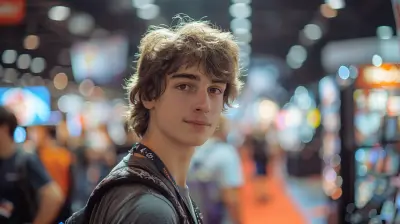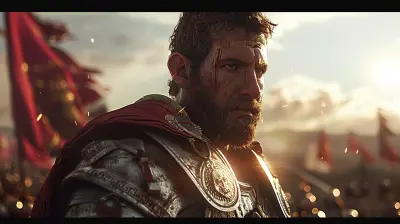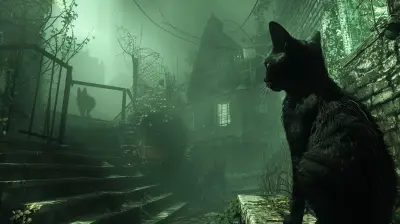Why Some Games Just Aren’t Fun to Play
15 October 2025
Ever found yourself staring blankly at your screen, controller in hand, wondering why you’re not having a good time? You booted up the game with high hopes. The graphics? Stunning. The hype? Massive. The game mechanics? Revolutionary—or so they told you. Yet here you are, playing out of obligation rather than joy. We’ve all been there, and honestly, it begs the question: why are some games just not fun to play?
In a world overflowing with gaming options, from pixelated indies to cinematic AAA beasts, how is it possible that some of them leave us bored, frustrated, or just plain empty? Let's take a deeper dive into the shadowy realm of un-fun games and the hidden reasons behind their failure to ignite that all-important spark of joy.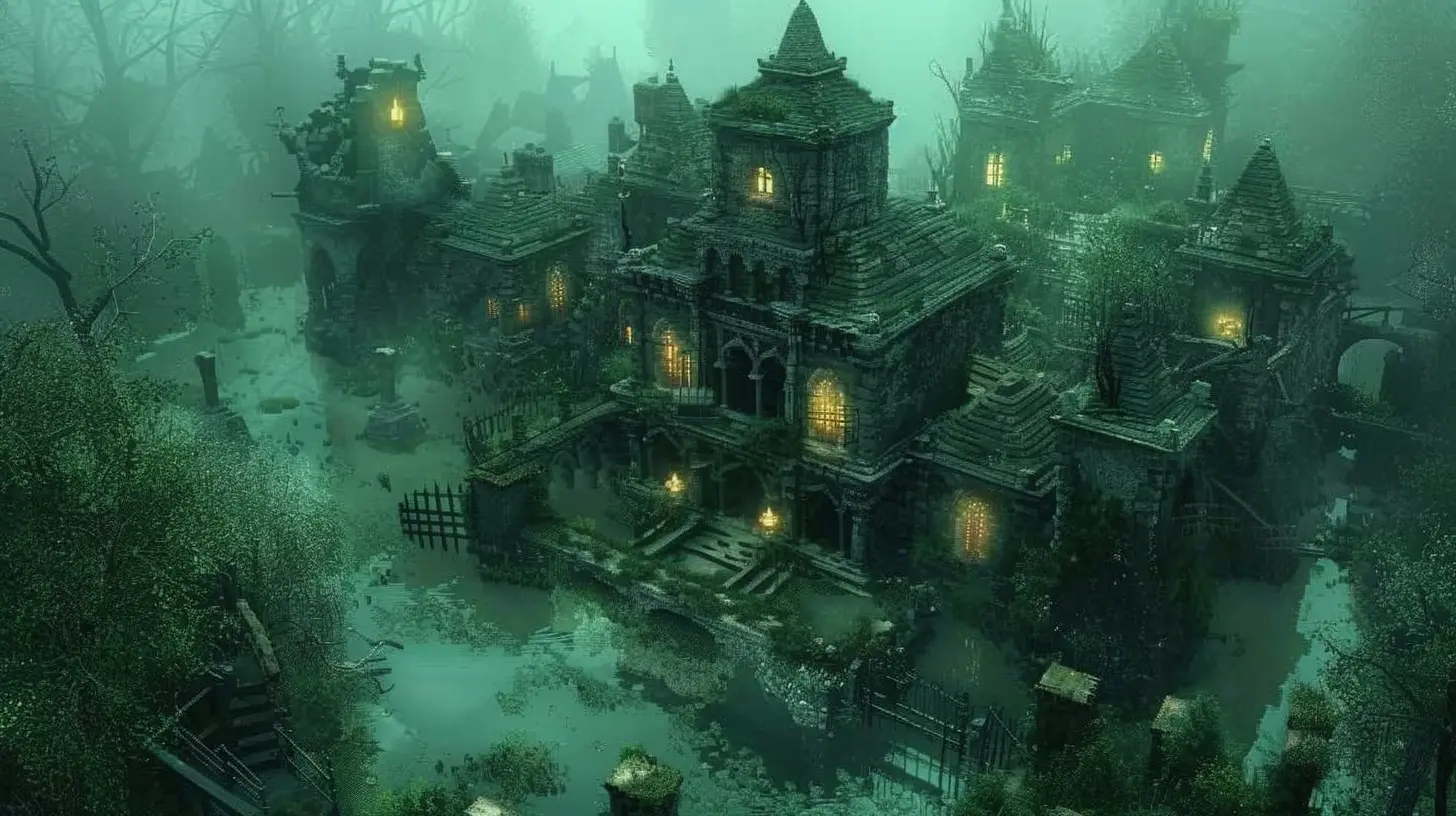
The Spark That Wasn’t There
Let’s start with a simple truth: fun is subjective. What’s trash to one gamer might be treasure to another. But there’s more to it than just personal taste. Games are a symphony of design choices, player interaction, story, mechanics, sound, and a flood of emotions. When even one of those instruments plays out of tune, the whole experience can fall flat.So, what’s going wrong?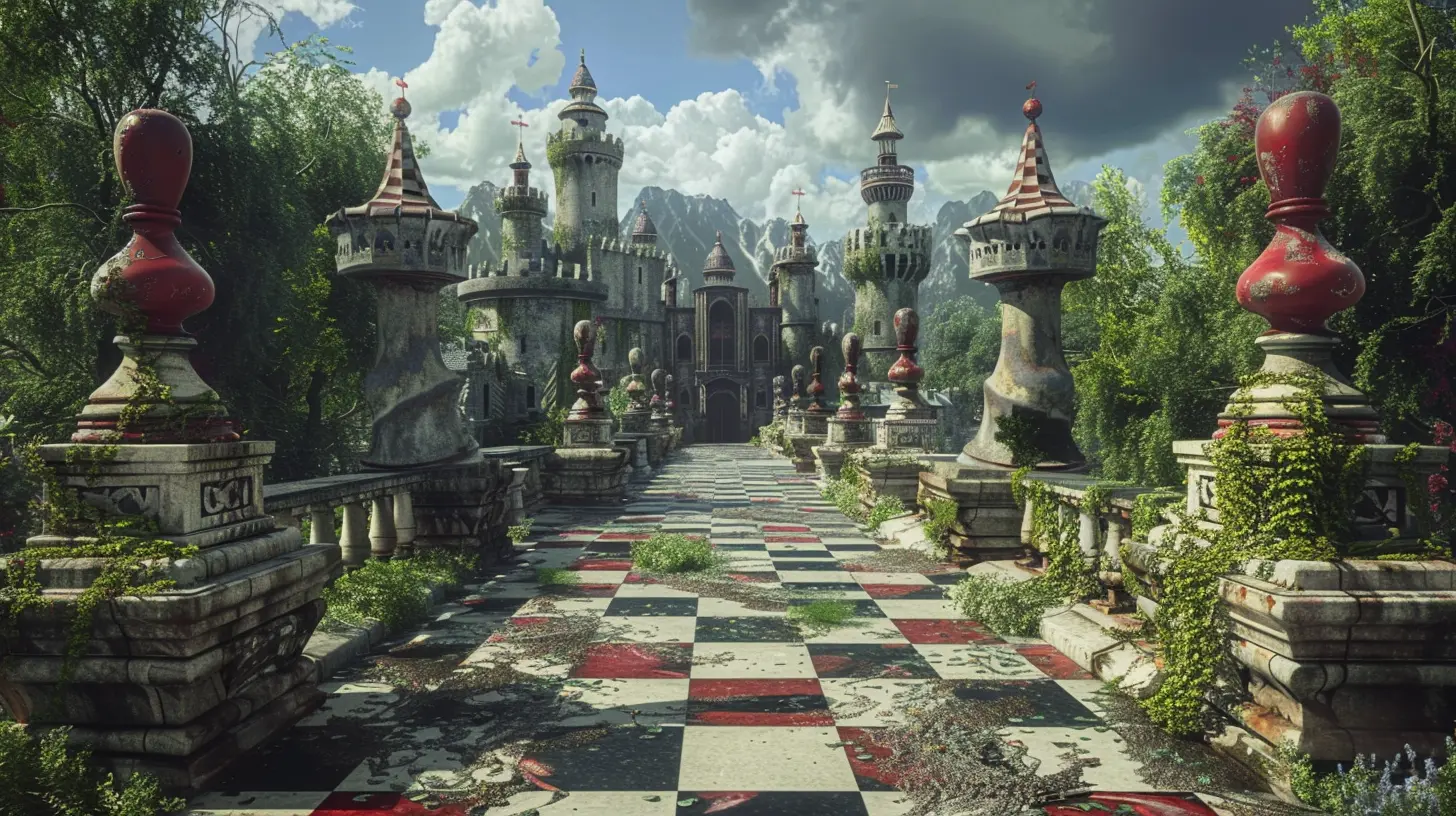
1. 🚧 Gameplay Loops That Feel Like Chores
Have you ever played a game where everything just felt… repetitive? You know the type: gather ten herbs, kill ten wolves, rinse and repeat. The dreaded "grindy game loop".Games are supposed to be interactive joy machines, not second jobs. When you're forced to go through the same motions again and again without variety or a meaningful sense of progress, it kills the fun. It’s like watching paint dry—but with flashy particle effects and a level-up bar that barely moves.
The issue? Developers sometimes mistake "lasting content" for "repetitive tasks." But no one wants to waste hours doing the same thing over and over, especially when the reward doesn’t feel worth the grind.
> Think of it like biting into what looks like a double chocolate chip cookie, only to realize it's just raisins and regret.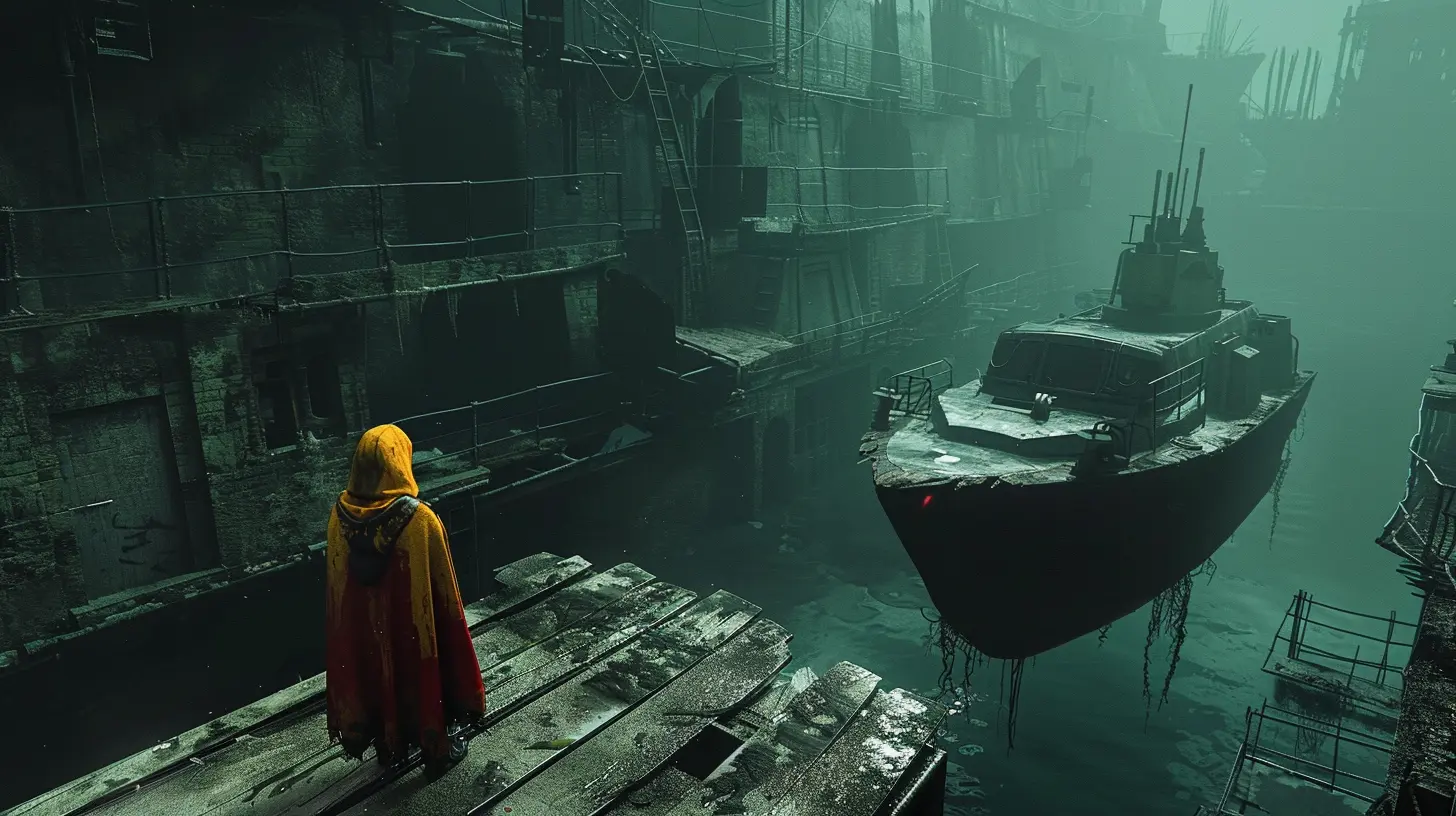
2. 🎯 Too Much Hand-Holding or Not Enough
Game design is a delicate dance between guidance and freedom. But some titles swing too far in either direction.Take overly hand-holdy games. The ones that pop up tutorials every five seconds, highlight every path, and practically play themselves. It’s like being on a rollercoaster with training wheels—safe, but totally lacking thrill.
On the flip side, there are games that toss you in blind. No map. No clue. Just vibes. While a little mystery is fun, aimlessness can turn excitement into exhaustion if not handled carefully.
In both cases, player agency—the power to make real impactful decisions—is compromised. And when we feel like our actions don’t matter, the magic dies.
3. 🧠 Shallow Storytelling and Weak Worldbuilding
Let’s talk about narrative. Even in action-packed games, story matters. It's what hooks us, makes us care about the world, and drives us to complete "just one more mission" at 2 a.m.When the story is flat, the dialogue cheesy, or the world unconvincing, it’s hard to stay invested. No one wants to spend hours in a universe that feels like it was cobbled together in a weekend brainstorm.
Great storytelling isn't about how many cutscenes you can cram in. It’s about building characters we root for, conflicts that entice us, and worlds that feel lived-in.
> Without a soul, a game is just a pretty shell—like a movie set with no script.
4. 💰 Monetization vs. Immersion
Now let’s have the awkward talk. Yep, I’m looking right at you, microtransactions.There’s nothing that ruins immersion faster than a pop-up reminding you about the "Sapphire Battle Pass – Only $49.99!" or in-game currency that you have to grind 20 hours for—or buy instantly, of course.
When a game feels more like a marketplace than an adventure, it’s hard to lose yourself in it. Monetization isn’t inherently evil, but it has to be subtle, respectful, and most importantly, optional.
Because nothing wrecks the fun faster than realizing a game has stopped being a game and turned into a casino in disguise.
5. ⚖️ Poor Game Balance
Let’s say you’re playing a strategy game. You spend ages building your perfect setup, only for one overpowered unit or weapon to steamroll your entire plan in seconds. Frustrating, right?Unbalanced games feel unfair—and not in a fun "tough boss with a learning curve" kind of way. When the balance is off, certain playstyles become the only viable options, and creativity goes out the window.
We want challenge. We want learning. But we don’t want to feel punished for trying different paths.
Balance is the backbone of replayability. Get it wrong, and even the coolest mechanics won’t save the experience.
6. 🤖 Clunky Controls and Awkward UI
Ever tried to land a critical shot in a shooter, only to wrestle with stiff aiming mechanics that feel like you’re underwater? Or navigate a menu so bad, it makes you want to throw your controller out the window?Yeah, controls matter. A lot.
Unresponsive or unintuitive controls can make even the most thrilling portions of a game feel like a slog. The UI should be your silent sidekick—not an enemy you fight against.
When you're constantly taken out of the moment because the interface is fighting you, that kills the vibe instantly.
> It’s like trying to write poetry with oven mitts on—technically possible, but spiritually wrong.
7. 🧩 Lack of Innovation or Too Much of It
Ironically, some games fail because they try too hard. Others fail because they don’t try at all.Games that bring nothing new to the table quickly start to feel like clones of something we already played (and probably enjoyed more). But push the envelope too far, and you risk overwhelming the player with alien mechanics, confusing systems, or gimmicks that don’t stick.
It’s a tightrope walk. Great games evolve the genre. Bad ones either cling to the past or race ahead without looking back.
8. 😴 Pacing That Puts You to Sleep
You might have an epic world, an emotional story, and solid mechanics, but if your pacing’s off, it’s like reading a thrilling book one paragraph per day.Too slow, and it drags. Too fast, and you’re overwhelmed. Worst-case scenario? The game starts strong, then fizzles out halfway through like a leftover soda.
Pacing is about keeping the player engaged. Giving them highs and lows. Breathers and bursts. If the rhythm is wrong, even great moments can fall flat.
9. 👥 Lack of a Meaningful Social Experience
Let’s face it, some games are better with company. And when multiplayer games fail to deliver a decent social environment—whether due to toxic communities, poor matchmaking, or lack of cooperative incentives—it turns fun into frustration.Games are a form of digital campfires. We gather, compete, and bond. But when that social glue is missing or poisoned, the game loses part of its soul.
Good multiplayer isn't just battle stats. It's banter, teamwork, and shared stories that last way longer than the game session.
10. 🧠 When You’re Just Not the Target Audience
Sometimes, a game isn’t bad—it’s just not for you.Maybe it’s a hyper-realistic flight simulator and you’d rather be jumping off cliffs in a fantasy world. Or maybe it’s a story-heavy visual novel and you’re craving fast-paced action.
And that’s okay.
Not every title needs to appeal to everyone. But understanding your own gaming taste helps you avoid wasting time (and money) on something that’s never going to vibe with your style.
So, What Makes a Game “Fun,” Anyway?
Here’s the poetic twist: fun isn’t a checklist. It’s a feeling.It’s what happens when a game clicks with your imagination. When you lose track of time. When you're smiling without realizing it. When frustration is just part of the journey, not the destination.
The best games are those that don’t just offer entertainment—but connection. To a world. To a story. To yourself, even.
So next time you find yourself playing a game and thinking, “This just isn’t fun,” trust that instinct. And know it’s not necessarily you—it might just be the game.
Wrapping It Up With A Bow Of Real Talk
Not every game is going to hit the bullseye. The industry is big, beautiful, and chaotic, and it’s filled with both masterpieces and messes. But that’s part of the adventure, right?We live in the golden age of gaming, but even gold gets tarnished sometimes. If a game doesn’t bring you joy, don’t force yourself to play it because of hype or fear of missing out.
Your time is precious. Spend it in worlds that ignite your imagination, challenge you in the right ways, and make the hours slip by like minutes.
all images in this post were generated using AI tools
Category:
Game FailsAuthor:

Emery Larsen
Discussion
rate this article
1 comments
Isabella McGee
This article raises intriguing points! I wonder how player expectations and design choices intertwine to shape our enjoyment of different games.
October 22, 2025 at 3:07 AM

Emery Larsen
Thank you! Player expectations and design choices are indeed crucial in shaping enjoyment. Balancing these elements can make or break the gaming experience.
